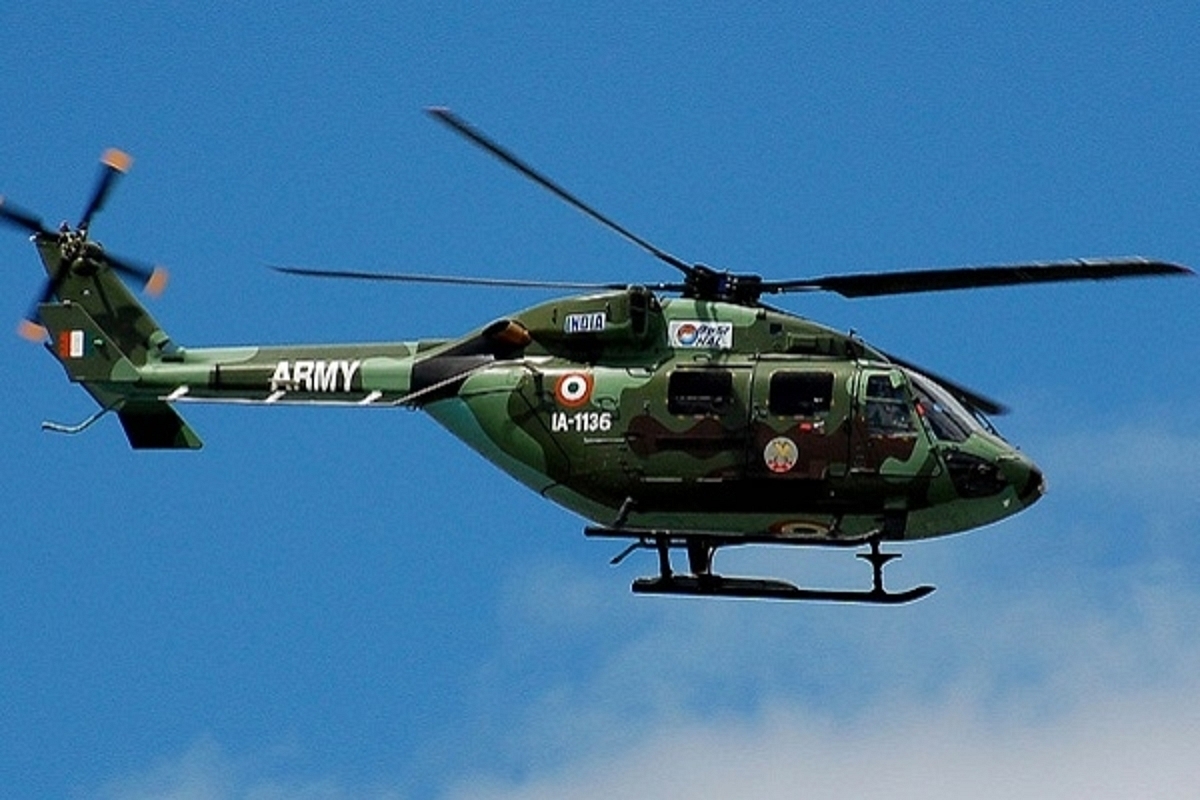Defence
HAL Fixes Design Flaws In Dhruv Advanced Light Helicopter; Control Rods' Replacement Process To Be Completed By June 2024

Indian Army’s Dhruv helicopter. (Representative Image) (Noel Reynolds/Wikimedia Commons)
The design and metallurgical flaw in the Hindustan Aeronautics Limited (HAL)-made Dhruv Advanced Light Helicopter (ALH) has been fixed, with the entire process slated for completion by June 2024, reported Hindustan Times.
This comes after a design review by Bengaluru-based Centre for Military Airworthiness and Certification (CEMILAC) identified a critical design flaw, that forced Dhruv ALH to crash three times in under three months this year.
These three crashes have forced all the three services to ground the entire ALH and light combat helicopter (LCH) fleet (LCH also uses the same control rods) for weeks.
According to the HT report, HAL has started to supply new steel booster control rods for 'collective' replacing the earlier aluminium booster control rods, to the ALH squadrons across the country.
“Control rods for 120 helicopters have been dispatched to different squadrons. The remaining helicopters will get these rods by November 2023. Incidents linked to control rod failure will not recur,” the report quoted HAL officials as saying.
Moreover, the steel control rods for pitch and roll will be supplied separately by November 2023 and June 2024, respectively.
“What is being replaced right now is the collective control rod. The other two rods will be similarly replaced between November 2023 and June 2024,” the HAL official stated.
Earlier, the design review by CEMILAC highlighted the drastic reduction in the fatigue life of the aluminum rods, happening due to an assembly error of serrated washers in the booster control rods.
“The drastic reduction in the fatigue life of the aluminum-made control rod with wrongly assembled serrated washers has been verified experimentally at Rotary Wing Research and Design Centre (RWR&DC), HAL as part of the committee’s investigation,” CEMILAC then said in the letter addressed to all the services.
Following the result of the design review, HAL on 15 May, decided to change the troubling aluminium-made control rods to steel control rods.
It is worth noting that the three services and the Coast-Guard combined operate more than 330 ALHs and its variants.
The ALH is critical for supporting operations in the high-altitude regions of Himalayas, since it is the only helicopter in Indian inventory that can operate satisfactorily in areas above 18,000 feet, apart from the vintage Cheetah and Chetak helicopters.
Support Swarajya's 50 Ground Reports Project & Sponsor A Story
Every general election Swarajya does a 50 ground reports project.
Aimed only at serious readers and those who appreciate the nuances of political undercurrents, the project provides a sense of India's electoral landscape. As you know, these reports are produced after considerable investment of travel, time and effort on the ground.
This time too we've kicked off the project in style and have covered over 30 constituencies already. If you're someone who appreciates such work and have enjoyed our coverage please consider sponsoring a ground report for just Rs 2999 to Rs 19,999 - it goes a long way in helping us produce more quality reportage.
You can also back this project by becoming a subscriber for as little as Rs 999 - so do click on this links and choose a plan that suits you and back us.
Click below to contribute.
Latest